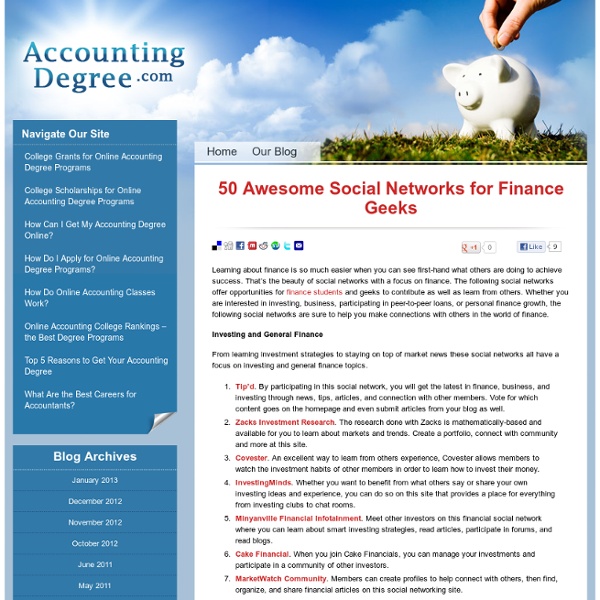Zacks Investment Research - Proven Stock Ratings Research Recommendations
Discounted Cash Flow & Stock Valuation
The purpose of the Discounted Cash Flow (DCF) valuation is to find the sum of the future cash flow of the business and discount it back to a present value. I use the F Wall Street method of valuing a business along with some tweaks here and there to suit my tastes in the free and best valuation spreadsheets you can find on this site. The advantage of this method is that it requires the investor to think about the stock as a business and analyze its cash flow rather than earnings. The first and foremost reason a business exists is to make money where money = cash, not earnings. Since cash is what a business needs in order to maintain and grow its operations, it’s only right to consider the possibility of its future cash growth rather than earnings growth. The disadvantage is that DCF is not suitable for start ups, growth companies or capital intensive companies where the cash flow cannot be accurately determined. Free Cash Flow FCF = Cash from Operations – Capital Expenditure Expected Growth
Practice Investing, Stock Market Game | UpDown.com
How to Calculate Intrinsic Value for Stock Warren Buffet Way
How to Calculate Intrinsic ValueDiscounted Earnings, Instead of Just Cash Flow Summarized Overview You will find information about why you should calculate intrinsic value in stock market investing, and step by step guide on how to do it. You will also find information about which key financial ratios to use and what you have to do after calculating intrinsic value. Why You should Calculate Intrinsic Value Simply because, you don't buy any stock at any price, do you? The price you are paying is the ultimate determinant for the rate of return that you'll be earning. However, buying a stock simply because it is cheap is not the right approach either. How to Calculate Intrinsic Value The way to go is, search for stocks whose prospects you believe in ( with good stock pick method ) and then use a valuation technique to ensure the purchase price is acceptable. How to do it? From 13 years historical data, you get the information as above. Let's start calculating intrinsic value of stock ABC.
Online Broker | Online Stock Trading | Online Options Trading - TradeKing
Research and Valuation Process
How to Invest in the Stock Market: Part 1 | Part 2 | Part 3 | Part 4 | Part 5 Here is the process I follow which is rooted in the Graham and Dodd approach: Search I usually scan for ideas reading print media such as the Wall Street Journal, Barrons, and websites such as Google Finance and blogs looking at 52-wk lows lists looking for headlines that just spell “bad news” and articles that may lead to ideas with catalysts, event driven ideas and sometimes macro-event driven ideas. I’ll use screens if I don’t find anything in the headlines. If I think I can profit off the situation, I’ll really do some due diligence. Analysis Financial Reports and Statements At this point, I would grab at least the last three years of annual reports, 10K/Q’s, 8-K’s, proxies, conference calls transcripts and sometimes trade journals or magazines for additional information not included in the public documents. Management Discussion & Analysis Lastly, I finish up the MD&A by looking for liquidity information. A. or
All About Trends
How to Value a Stock with Benjamin Graham’s Formula
How to value stocks series For other posts in the series, follow the links below. Quick Word on the Science and Art of Valuation Valuation is an art. Assumptions are needed to perform any type of analysis as the whole topic of stock valuation is forward looking. Throughout these valuation exercises, it’s important to understand that the final stock value will vary based on the assumption of scenarios. Instead of trying to pinpoint one number, the science behind valuing stocks is to come up with a range of values. Now, let’s see how Graham valued stocks. Using Benjamin Graham’s Formula to Value a Stock The Benjamin Graham Formula was Created by this man. The second method I use to value a stock is by using Benjamin Graham’s formula from The Intelligent Investor. With the extremely popular free Ben Graham stock spreadsheet I offer, the stock valuation method deserves a closer look. Benjamin Graham Formula The original formula from Security Analysis is (credit to wikipedia for the formula images)
Analyzing Financial Statements
This topic could be and is a full semester course at some business schools. It is a deep and rich topic that I can’t cover in one single blog post. But it is also a relatively narrow skill set at its most developed levels. But if you are an entrepreneur being handed financial statements from your bookkeeper or accountant or controller, then you need to be able to understand them and I’d like this post to help you do that. In the past three weeks, we talked about the three main financial statements, the Income Statement, the Balance Sheet, and the Cash Flow Statement. In general, I like to start with cash. Then look at how much cash the business had in a prior period. But that number can be misleading, particularly if you did any debt or equity financings during that period (or if you paid off any debt facilities during that period). If cash flow is positive for all periods, then you are done with cash. I generally like to go to the income statement next.
Mike Norman Economics



